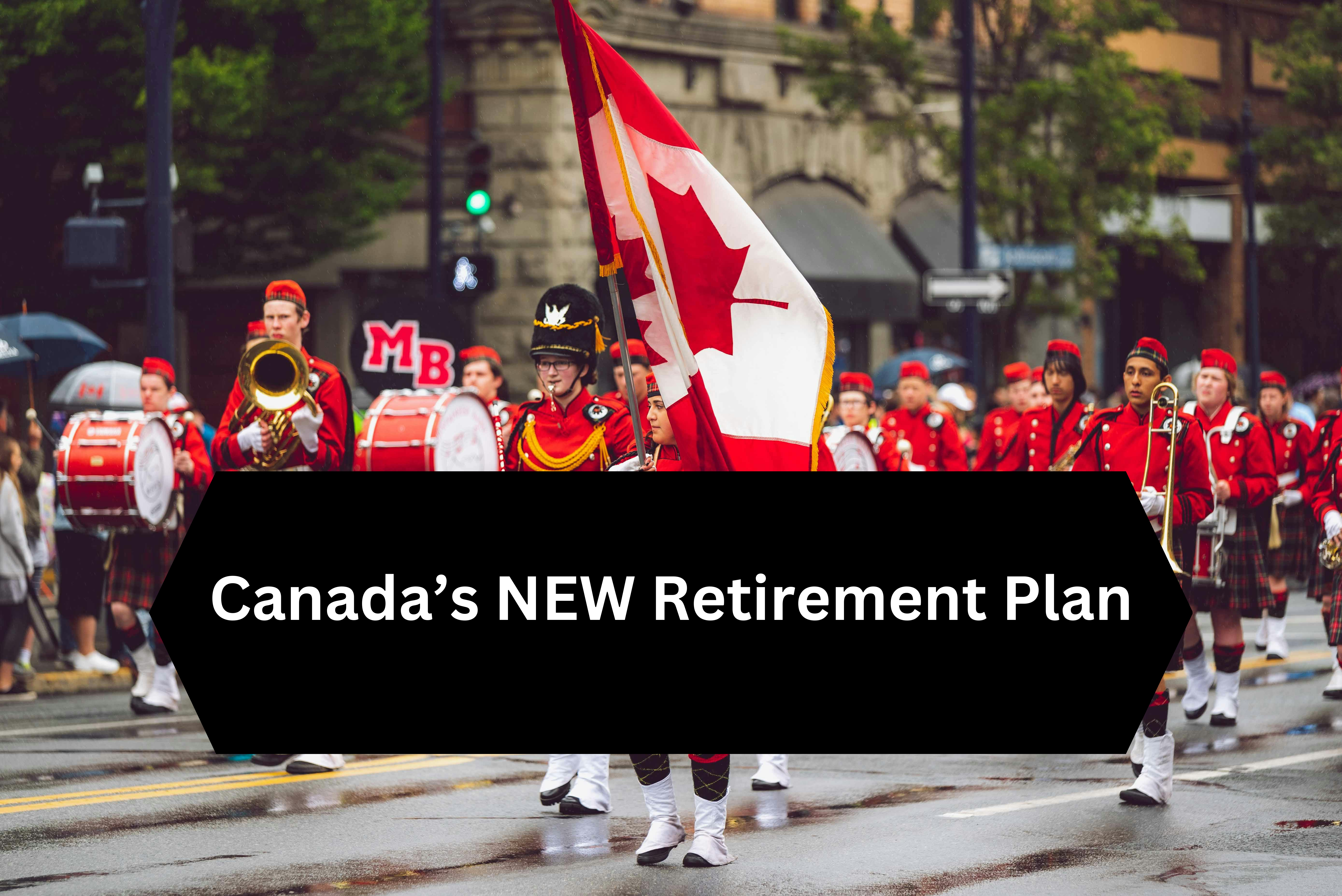10 Best Free Retirement Planning Tools for Canadians

Planning for retirement helps ensure we have enough money to meet our needs and achieve our goals after we stop working. While we know it’s important to start early, today’s economy makes it challenging.
Canadians are facing tough financial times with high inflation, rising interest rates, and record debt. The cost of living is making it harder to save, especially when just paying rent is a struggle. Our survey found that two-thirds of non-retirees see retirement as very important, and over half (52%) are relying on CPP as a key source of income. However, many are unsure how to prepare for retirement.
More than half (53%) don’t know how much they’ll need, and less than half (45%) have a financial plan. Only 25% regularly save from each paycheck, and 62% worry about running out of money in retirement. In this article, we’ll explore the best free tool available to help Canadians plan for retirement. Let’s dive in!
What to Look for in a Retirement Planning Tool
When choosing a retirement planning tool, it’s important to find one that fits your needs. Not all calculators are created equal—some are simple and quick, while others offer detailed projections based on multiple factors. Here’s what you should consider before picking the right one:
1. Accuracy & Reliability of Calculations
A good retirement tool should use up-to-date financial data and realistic assumptions about inflation, investment growth, and tax rates. Some calculators are based on fixed assumptions, while others let you adjust the numbers (e.g., changing your expected rate of return or inflation rate).
Expert Tip: Look for tools that include Canada-specific data, such as CPP (Canada Pension Plan), OAS (Old Age Security), and RRSP (Registered Retirement Savings Plan) withdrawals.
2. Customization Options (Pension, RRSP, TFSA, Investments)
Your retirement income will likely come from multiple sources, including:
- Government pensions (CPP & OAS)
- Employer pensions
- Personal savings (RRSPs, TFSAs, non-registered investments)
A good tool should allow you to enter these different income streams separately instead of treating everything as one lump sum. The more detailed the tool, the better the predictions.
Expert Tip: If you have different sources of income, choose a calculator that factors in tax treatment for each one. Some tools even estimate your tax burden in retirement!
3. Ease of Use & Accessibility
A retirement calculator should be easy to use, even if you're not a financial expert. Some tools offer step-by-step guidance, while others assume you already know how to enter details about your savings, expenses, and expected retirement age.
Key Features to Look For:
- User-friendly design – Simple, clear instructions
- Mobile-friendly – Can you use it on your phone?
- No mandatory sign-up – Some tools require an account, others don’t
Expert Tip: If a tool asks too many technical questions, it might be over-complicated for a casual user. Start with a simpler tool and move to a more detailed one later.
4. Integration with Other Financial Tools
Some retirement calculators connect with other financial planning tools, like budgeting apps or investment trackers. If you already use online banking with RBC, TD, or another institution, their built-in retirement planners might be more convenient since they can pull in real-time data from your accounts.
Expert Tip: If you like one-stop financial management, look for a retirement tool that works alongside budgeting software (like Mint or YNAB) or allows you to save and update your retirement plan over time.
Free Retirement Planning Tools for Canadians
Retirement planning can be overwhelming, but the good news is there are several free tools available to help Canadians estimate their future financial security.
These tools simplify complex calculations and help you determine whether you’re on track for a comfortable retirement. Below are 10 of the best free retirement planning tools that Canadians can use today.

Government of Canada Retirement Income Calculator
Best for: Estimating government benefits (CPP, OAS, GIS)
This is the official calculator from the Government of Canada, designed to estimate how much you’ll receive from:
- Canada Pension Plan (CPP)
- Old Age Security (OAS)
- Guaranteed Income Supplement (GIS)
It also lets you add other income sources, such as RRSPs, TFSAs, and employer pensions, giving a more complete picture of your retirement income.
Why use it?
Reliable & accurate – Uses government data to estimate your actual benefits.
Great for those relying on CPP & OAS – Perfect if you’re unsure how much you’ll get from government programs.
Limited investment insights – Doesn’t analyze stocks, mutual funds, or personal investment strategies.
Try it here: Government of Canada Retirement Income Calculator
Wealthsimple Retirement Calculator
Best for: Beginners who want a visual roadmap
Wealthsimple is a popular Canadian online investment platform, and their free retirement calculator helps users visualize their future savings based on contributions, inflation, and spending habits.
Why use it?
Simple & user-friendly – Perfect for beginners.
Adjustable scenarios – Change retirement age, savings rate, and spending needs.
Requires email sign-up – You need to create a free Wealthsimple account.
Try it here: Wealthsimple Retirement Calculator
Sun Life Retirement Planner
Best for: Detailed retirement expense planning
Sun Life's planner asks detailed questions about your expenses, lifestyle, and savings goals, making it one of the most comprehensive free tools available.
Why use it?
Detailed expense tracking – Helps you predict real-world spending.
Includes tax considerations – Estimates taxes on withdrawals.
Best for Sun Life users – Works better if you already have a Sun Life account.
Try it here: Sun Life Retirement Planner
RBC Retirement Calculator
Best for: RBC customers or those with existing investments
RBC’s tool estimates how long your money will last based on your current savings, expected withdrawals, and market returns.
Why use it?
Connects with RBC accounts – Auto-fills your financial data if you bank with RBC.
Adjusts for inflation – Gives realistic future values.
Better for RBC clients – Can be harder to use for non-customers.
Try it here: RBC Retirement Calculator
TD Retirement Savings Calculator
Best for: Simple savings projections
TD’s tool is a quick, no-frills calculator that estimates how much you need to save per month to hit your retirement goal.
Why use it?
Quick and simple – Takes less than 5 minutes.
Helps set savings targets – Great for goal setting.
Lacks detailed analysis – No tax or investment breakdowns.
Try it here: TD Retirement Savings Calculator
CIBC Retirement Ready Tool
Best for: Integrating CPP, RRSP, TFSA, and pension income
This tool gives a big-picture look at your total retirement income by including government benefits, savings, and other income sources.
Why use it?
Includes multiple income streams – Great for those with mixed investments.
Adjustable scenarios – See how early vs. late retirement affects savings.
Requires basic financial knowledge – Might be confusing for beginners.
Try it here: CIBC Retirement Ready Tool
Scotiabank Retirement Planner
Best for: Setting retirement goals based on lifestyle needs
Scotiabank’s tool helps users estimate their future finances based on personal lifestyle choices, such as travel, home expenses, and healthcare costs.
Why use it?
Customizable for lifestyle choices – Great if you have specific retirement goals.
Works for all income levels – Good for both high-net-worth and average retirees.
Best for Scotiabank clients – Works best if you bank with them.
Try it here: Scotiabank Retirement Planner
BMO Retirement Savings Calculator
Best for: Quick estimates on retirement savings growth
BMO’s tool focuses on investment growth, helping users see how their RRSP and TFSA contributions will grow over time.
Why use it?
Great for investment planning – Focuses on TFSA & RRSP growth.
Good for quick calculations – No sign-up needed.
Lacks detailed tax planning – Doesn’t estimate taxes on withdrawals.
Try it here: BMO Retirement Savings Calculator
FP Canada Retirement Planning Tool
Best for: Those who want a professional-grade tool
Developed by the Financial Planning Standards Council, this tool is great for serious retirement planners looking for detailed insights.
Why use it?
Developed by experts – Based on real financial planning principles.
Considers multiple scenarios – Helps you prepare for market fluctuations.
More complex – Not as beginner-friendly as other tools.
Try it here: FP Canada Retirement Planning Tool
Retire Simple Canada
Best for: Independent & user-friendly planning
Retire Simple is a free online calculator built specifically for Canadians to estimate savings, retirement income, and withdrawal rates.
Why use it?
Made for Canadians – Includes CPP, OAS, and RRSP calculations.
Easy to use – No sign-up required.
Doesn’t integrate with banks – Requires manual data input.
Try it here: Retire Simple Canada
All these tools can help you estimate your retirement savings and plan for the future. If you’re just starting, the Government of Canada’s calculator is a great place to begin. If you want more personalized insights, try tools like Wealthsimple or Sun Life.
How to Choose the Right Retirement Planning Tool
Choosing the right retirement planning tool can feel overwhelming, especially with so many options. But don’t worry! Here’s a step-by-step guide to help you pick the best one for your needs.
Comparing Features: Which One is Best for You?
Different tools offer different benefits. Here’s what to consider:
If you want government-backed accuracy → Use the Government of Canada Retirement Income Calculator (best for CPP & OAS estimates).
If you bank with a major institution → Try your bank’s retirement calculator (RBC, TD, BMO, Scotiabank, CIBC) since they integrate with your existing accounts.
If you want easy-to-use visuals & projections → Wealthsimple’s and Sun Life’s tools offer great graphical overviews.
If you need personalized planning → FP Canada’s retirement tool is backed by certified financial planners.
Should You Use Multiple Tools?
Yes! No single tool is 100% perfect. Using two or three calculators can give you a more accurate picture of your retirement finances. Here’s a tip:
🔹 Start with the Government of Canada Calculator (for CPP & OAS).
🔹 Use a bank’s calculator (if you have investments with them).
🔹 Try a third-party tool (like Wealthsimple or FP Canada) for extra insights.
When to Seek Professional Financial Advice
Even the best calculators can’t fully replace a financial planner. You might need expert help if:
- You have multiple income sources (pension, rental properties, foreign investments).
- You plan to retire early or move abroad.
- You’re unsure how much to withdraw from RRSPs, TFSAs, or other accounts.
- You want tax-efficient retirement strategies.
A CFP (Certified Financial Planner) can customize a plan to maximize your retirement income while keeping taxes low.
Frequently Asked Questions
Are These Retirement Calculators Accurate?
Most tools give a solid estimate, but they can’t predict market conditions, inflation, or unexpected expenses. That’s why it’s smart to use multiple tools and revisit your plan yearly.
Which Tool is Best for Planning Early Retirement?
If you’re aiming for early retirement (before 60-65), try:
- Wealthsimple Retirement Calculator → Great for flexible "What If" scenarios.
- FP Canada’s Retirement Planner → Designed for serious retirement planning.
Most bank calculators assume retirement at 65, so they may not be ideal for early retirees.
Do These Calculators Include Taxes?
Some do, but many don’t account for income tax on withdrawals from RRSPs or pensions. If tax efficiency is important, use:
- Government of Canada’s Calculator (includes CPP/OAS taxation).
- FP Canada’s Planner (offers a more detailed tax breakdown).
Can I Use These Tools for Free Without an Account?
Yes! Most calculators are completely free and don’t require an account. However:
- Some bank tools may ask you to log in if you’re a customer.
- Advanced tools (like FP Canada) might ask for basic info to customize results.
What If I Have U.S. or International Assets?
If you have U.S. or overseas income (like a 401k, rental income, or foreign pension):
- Use a Canadian calculator first to estimate your local income.
- Then, consult a cross-border financial expert for tax and currency conversion planning.
Final Tip:
🔹 No single tool is perfect—combine multiple calculators for the best results.
🔹 Review your retirement plan every year to adjust for inflation, market changes, or life events.
🔹 If in doubt, consult a financial planner to optimize your retirement savings.
Also read; Employer Pension Plans in Ontario



